What Is Quantum Dot Display ?
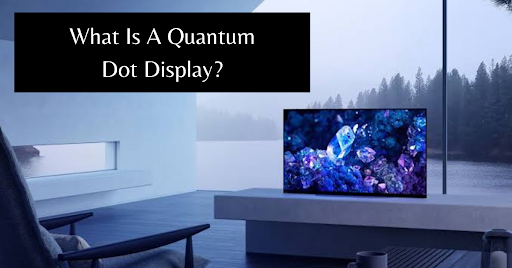
The CES, an annual business exhibition hosted by the Consumer Technology Association, is where the story of the quantum dot display begins. It is a highly significant technological event in the world. Leading makers of consumer electronics display their most recent products and technology at this yearly business event. New technology known as Quantum Dot was just unveiled at the CES exhibition. You will get to know about what a quantum dot is and how it functions in this article so keep reading.
Regardless of the name given to it, Quantum Dot was the topic of conversation at the time and was closely associated with those who were enthusiastic about 4K resolution screens. Many people think that Quantum Dot will revolutionize the television industry by bringing a better picture quality to more affordable television sets.
What Is Quantum Dot Display
Quantum-Dot Display Television or LCD Television
The first thing you should know about Quantum Dot TVs is that they belong to a brand-new class of LED-backlit LCD TVs. A Quantum Dot display can significantly enhance the colors on the screen while still producing visuals of the same quality as an LCD. On a typical LCD television, the backlighting system consists of a cluster of LEDs that are either positioned directly behind the screen or at its edges. This LED light is dispersed, led by a light-pipes plate which is also known as an LED and illuminated by a polarizing filter. There is an instrument called a light-pipes plate which helps to produce light from a light source to the specific position where the light is necessary. Later, the photons will encounter a layer of liquid crystals that can either halt the light rays or allow them to flow through a second polarizing filter.
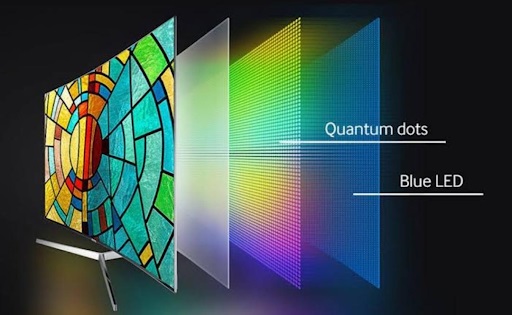
Light rays pass via a layer of red, blue, green, and, in some circumstances, yellow colour filters before entering the second polarizer. Subpixels are the name for these filters. The arrangement of coloured light beams that can be seen on the other edge of the screen is controlled by the distribution of electrical charge to the subpixels. The color intensity per pixel on the display is created by the combination of light rays.
How is the layout of Quantum Dot Display on LCD?
The only difference is when the diffuser sheet in front of the light-guide plate (LED) in a conventional LCD is replaced with a Quantum Dot film. The benefits and drawbacks are the same for standard LCD TVs as well. One can easily create Full-array backlit Quantum Dots using the local dimming method which is proven to be very productive in case of picture uniformity.
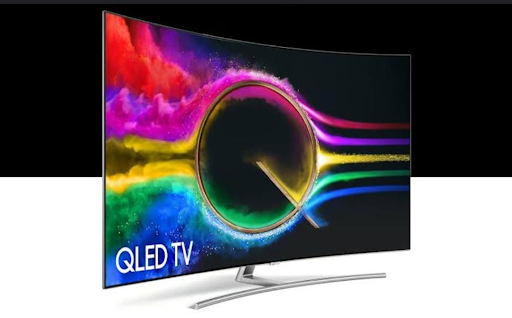
With an edge-lit Quantum Dot Television set which does not include local dimming, color banding as well as greyer blacks might be visible. You will encounter 4K Quantum Dot Television sets more frequently than traditional Full HD Quantum Dot Television sets because the industry is primarily driving toward the 4K resolution.
Why Quantum Dot Television Is Distinct?
The color of the backlight is where a Quantum Dot Television differs from other models. The LEDs used in many common LCD TVs emit white light rays, however the light rays emitted by Quantum Dot TVs are blue. Standard LCD TVs employ blue LEDs and are covered in yellow phosphor, which emits white light. Quantum dots are significant in this context. The blue LED light rays will illuminate the image in blue tones, while the quantum dots will emit red and green light. Quantum Dots are placed in a pipe, also known as Quantum Rail, on the light guide plate (LED) or on a sheet of film above the LEDs.
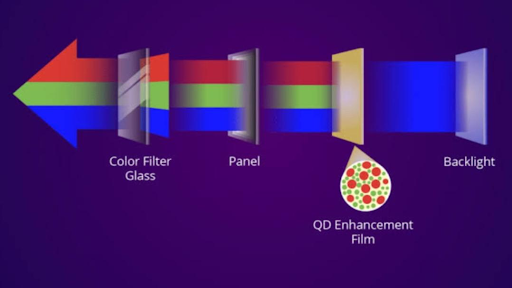
The only task that Quantum Dots are needed to execute is to emit a single color. At this job, quantum dots are successful. A Quantum Dot glows with a precise, controllable color when light rays strike it. The Quantum Dots glow brightly like lightning bugs when the blue LEDs emit light onto them.
Different types of Quantum Dots
The size of Quantum Dots determines their color. On a television, there are two sizes of quantum dots:
Large Quantum Dots: They usually glow red and have a total diameter of almost 50 atoms or more.
Small Size Quantum, Dot—These dots are light green and have a total diameter of almost 30 atoms or more.
On a television, there are billions of these quantum dots.
When it comes to vivid colors and a wide color spectrum, quantum dots outperform traditional LCD TVs. A light guide plate (LED) in a typical LCD creates a wider spectrum of white light rays and appears clumsy, with a lot of light falling in a small range of colors that the TV set’s color filters cannot see. Even yet, the amount of light wasted by a Quantum Dot TV is essentially nonexistent. On Quantum Dot TV, the colors are more vivid and accurate.
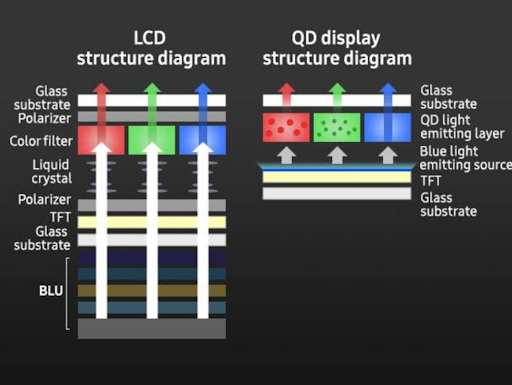
Quantum Dot Display
Samsung Electronics’s supplier of display and lighting resolutions for TVs and other displays, QD Vision, asserts that its tube-based approach is simpler and more affordable to implement. The inexpensive edge-lit LCD TV sets’ color performance can also be improved using the tube-based technique. The oxygen-barrier film needed for Quantum film-based dots is pricey, according to QD Vision.

However, for the Quantum Dot film, Nanoco and Nanosys are working with organizations like Dow Chemicals and 3M. This will guarantee that Quantum Dot-based TV prices stay low. Additionally, it will enable Quantum Dot TVs to remain competitive and be able to cost-effectively take the place of older regular LCD TVs.
Conclusion
The diffuser sheet found in your standard LCDs will soon be replaced with quantum dot films inside the LCD. Ultra high quality colors and more engaging viewing angles are provided by LCD’s quantum dots. Comparing Quantum Dot TVs to OLED TVs, expect them to be less expensive. The majority of MRPs for these early Quantum Dot TVs will probably range between Rs. 50,000 and Rs. 95,000. At the starting price range, you should anticipate nothing less than a 43-inch Quantum Dot LCD TV. Hope this article helped you know about everything you needed to know about Quantum dot display.